- Home
- slideshows
- miscellaneous
- I drove a $52,000 Alfa Romeo Giulia sport sedan to see if could combine Italian style with BMW-beating performance - here's the verdict
I drove a $52,000 Alfa Romeo Giulia sport sedan to see if could combine Italian style with BMW-beating performance - here's the verdict
The 2018 Alfa Romeo Giulia T Lusso is just a darn pretty set of wheels. The prettiest of sport sedans, if you ask me. As with FCA stablemate Maserati, the Alfa simply oozes style.

The entire car flows smoothly rearward, as a great car should, without a lot of needless exterior filigree spoiling the lines.
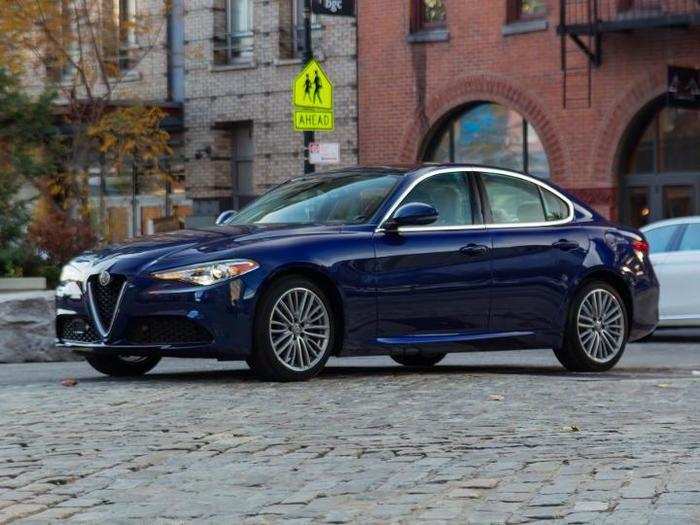
The proportions are ever-so-slightly skewed toward the hood, evocative of a time when larger engines made for longer front ends.
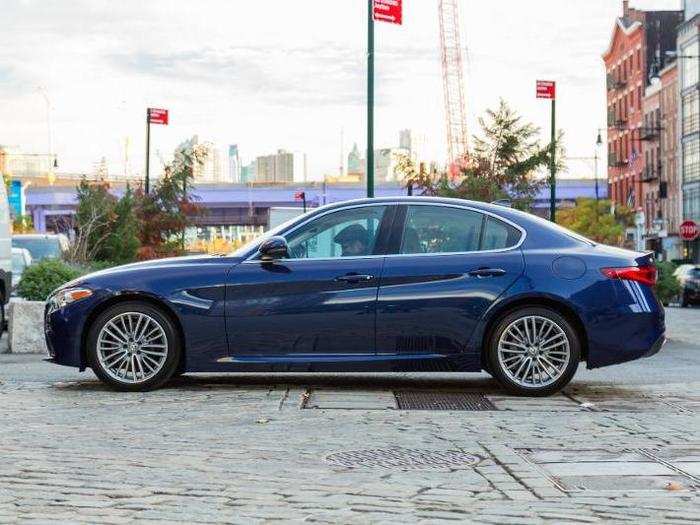
I had issues with the Giulia Quadrifoglio's back end, but I can't argue with this Giulia's refreshing lack of overpumped haunches above the stern wheels.
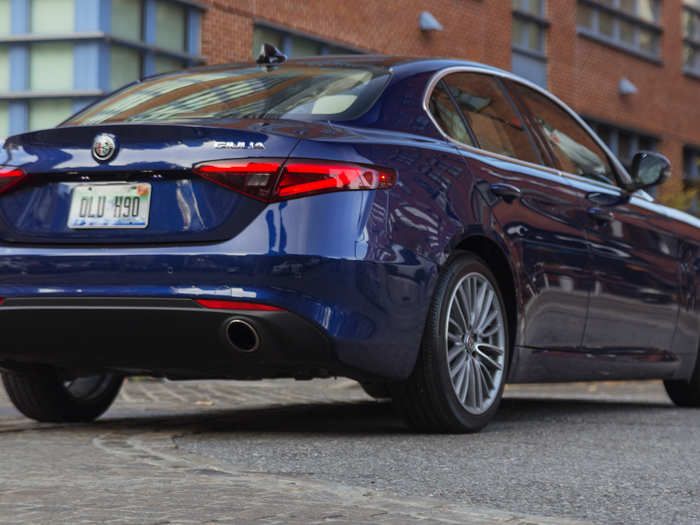
The more you look at it, the more you like it. The subtle details add up. But the design isn't overdone. It's like comfortable, elegant Neapolitan tailoring. The "Montecarlo Blue Metallic" paint job is exquisite.
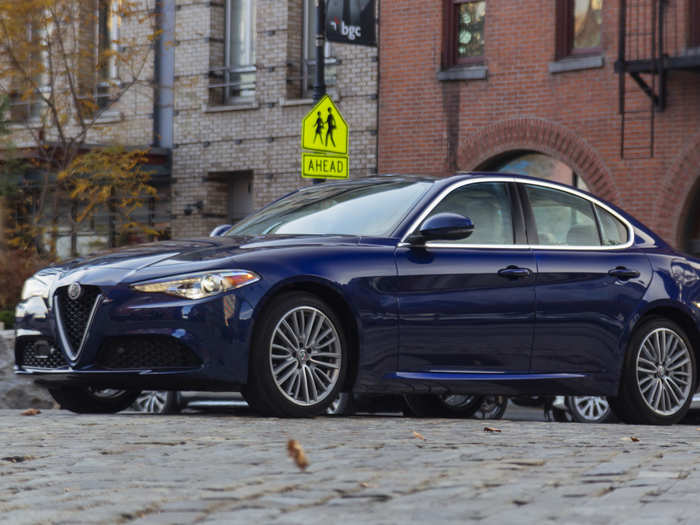
So, less is more — except where the bold, inverted triangle of the classic Alfa Romeo grille is concerned. You could argue that the entire design is governed by the need to feature this single, prominent element.
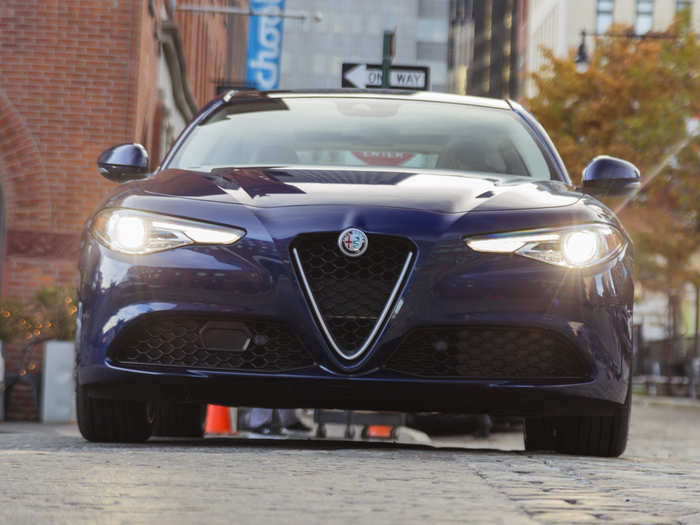
The badge is is simply gorgeous.
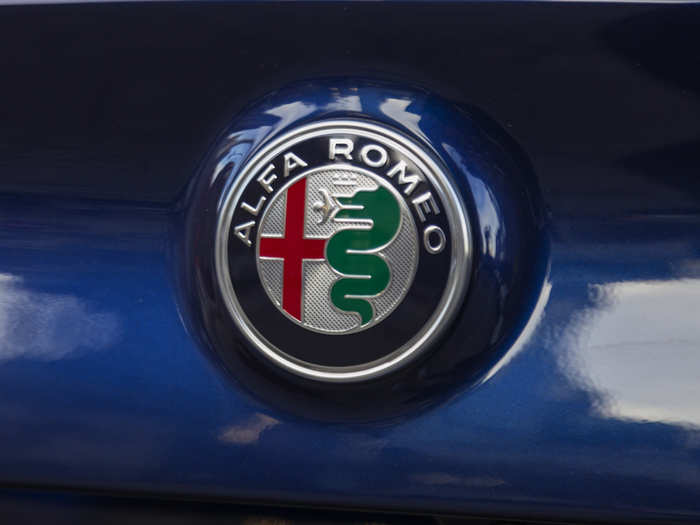
I continue to think the rear end is a bit dull, but I can live with it.
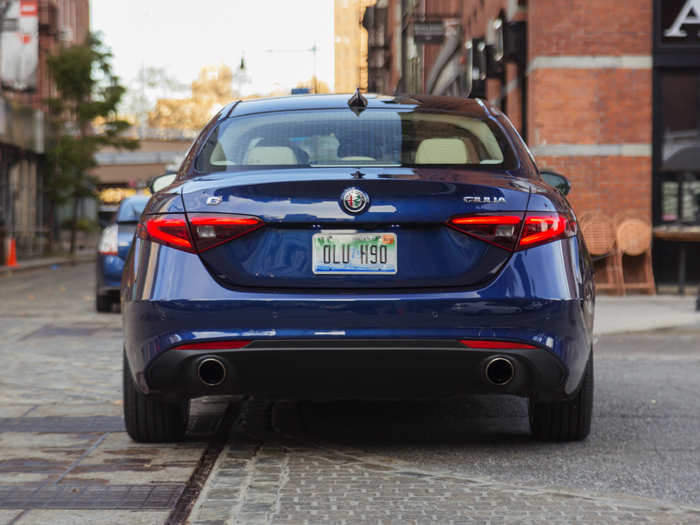
The 18-inch aluminum wheels are part of $2,500 Lusso package of extras. Again, these aren't the biggest wheels you could stick on the car, but they just look right.
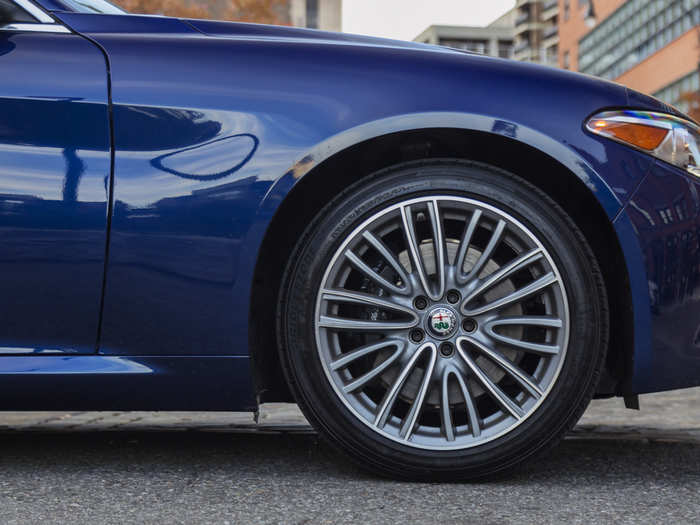
Not a huge trunk, by any stretch. But large enough to handle a weekend's worth of luggage or a week of groceries.
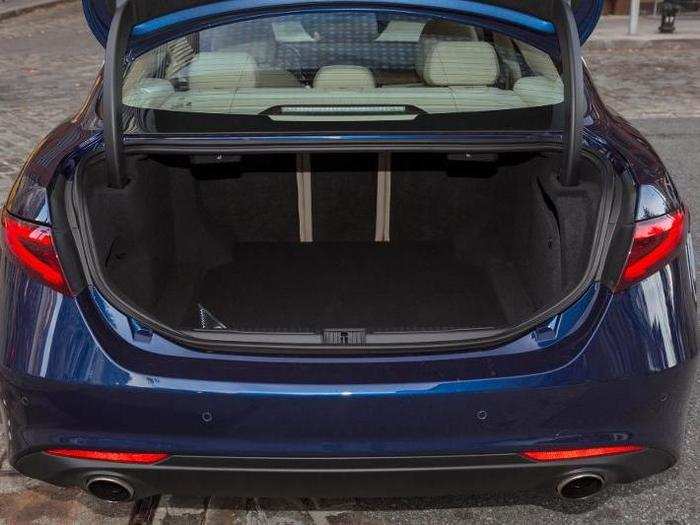
Complaint time! See that yellow bit of plastic at the front of the engine bay? That's the hood release, and I'll bet you a Campari and soda that it's going to fail within a year. But what about the motor?
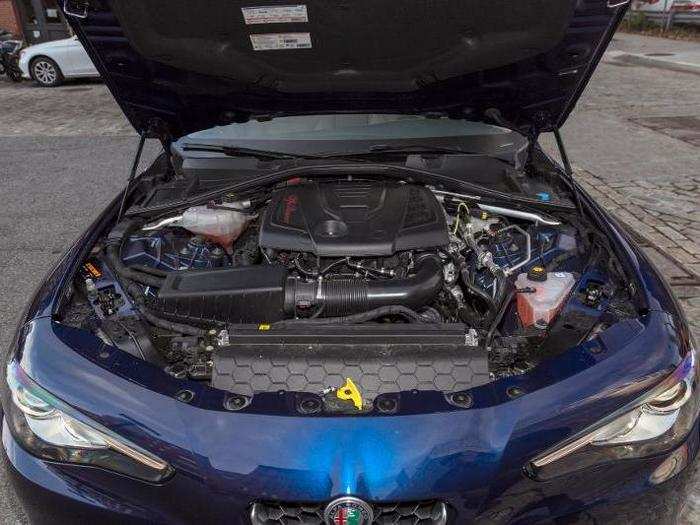
The Giulia's 2.0-liter, 280-horsepower inline four sends power to the all-wheel-drive system via an eight-speed automatic transmission. With 306 pound-feet of snappy torque, the Giulia sprints to 60 mph in about five seconds.
You'd think I'd have encountered a big letdown after the Quadrifoglio's stonking 505hp mill, but while Quad feels as if it's chewing up and spitting out the pavement, the four-cylinder Giulia is quick and light.
Velocity comes in various flavors.
The Alfa Romeo script makes even the homely engine cover look suave.
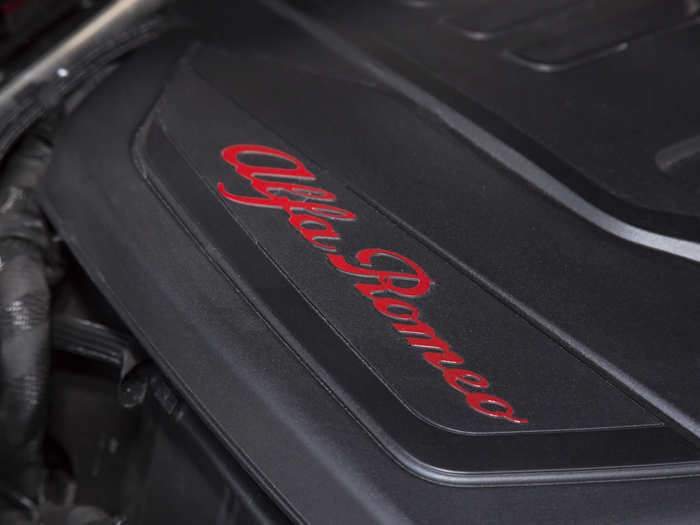
Cream — in this case, "Crema" — interiors aren't for everyone. But in the Giulia, it works for me!
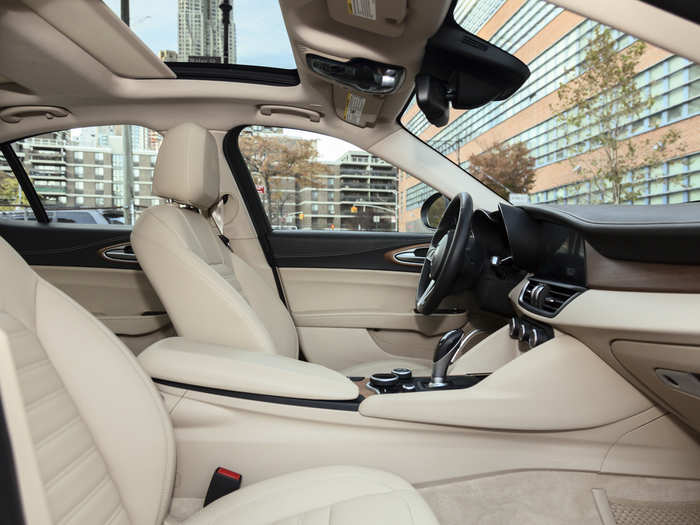
There's a moonroof up front ...
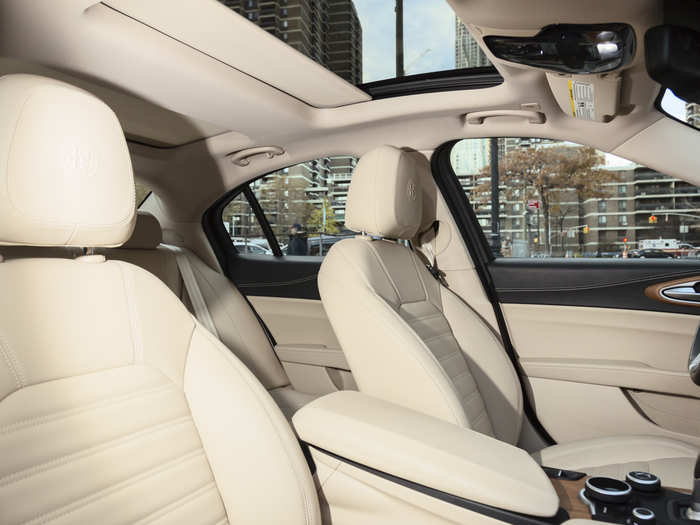
... And in the back. A good thing, because ...
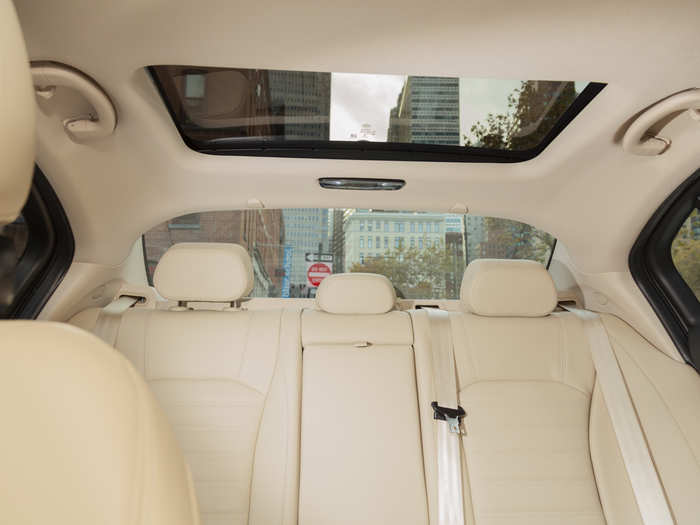
The rear seats aren't roomy. Nor is their a lot of adult legroom.
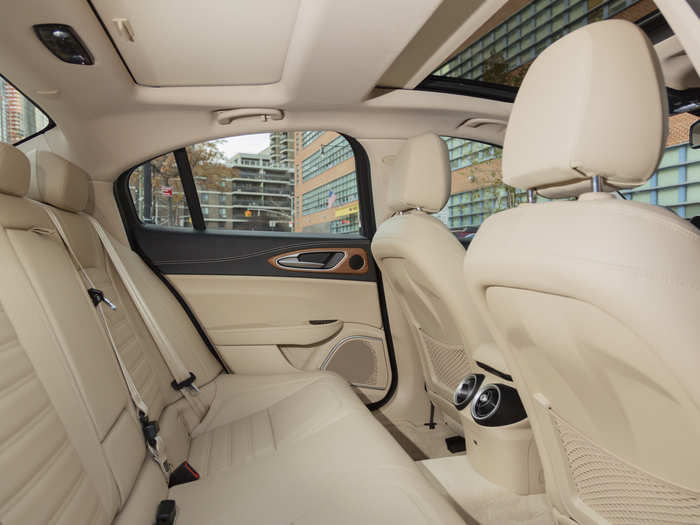
Let's take a closer look at the driver's position.
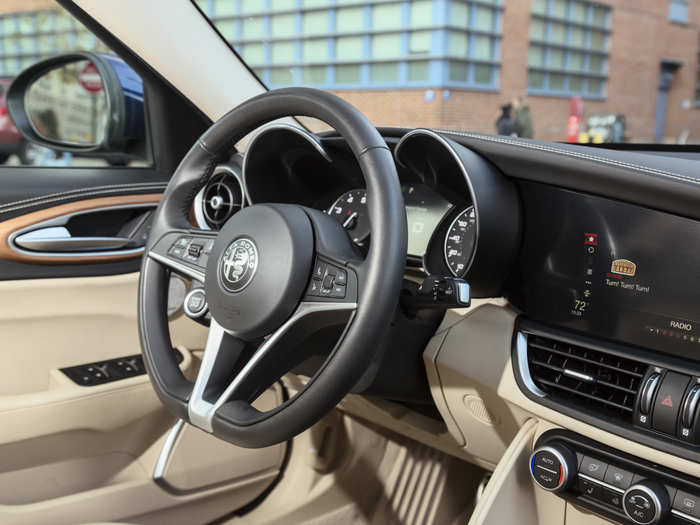
Analog/digital gauges and a flat-bottomed, leather-wrapped steering wheel combine with the airy interior to join performance prowess with premium-ness. Note the stop-start button on the wheel, a la Ferrari.
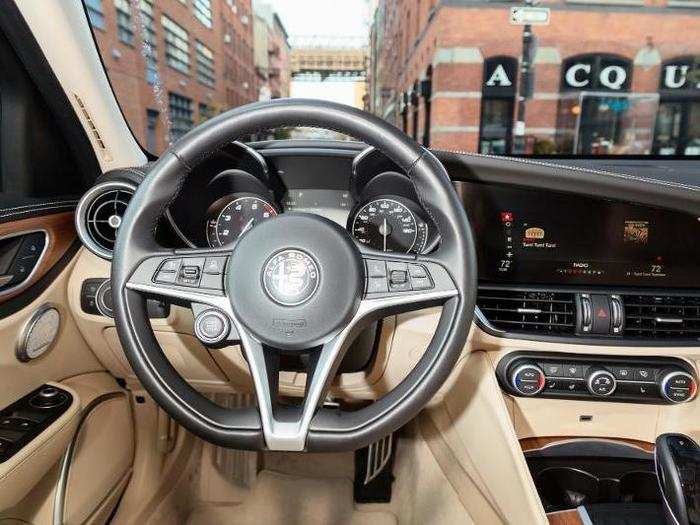
Walnut accents are well worth the $350 extra. Beautiful wood!
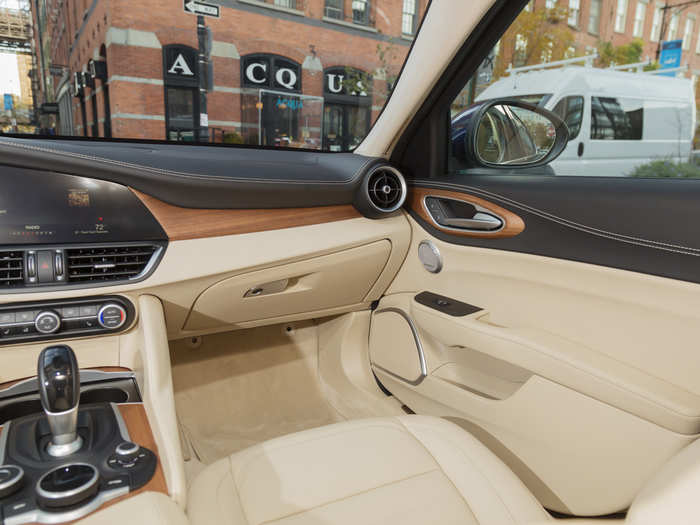
The joystick shifter takes some getting used to, and it shares space with the Giulia's "DNA" drive selector and the puck-like infotainment system controller.
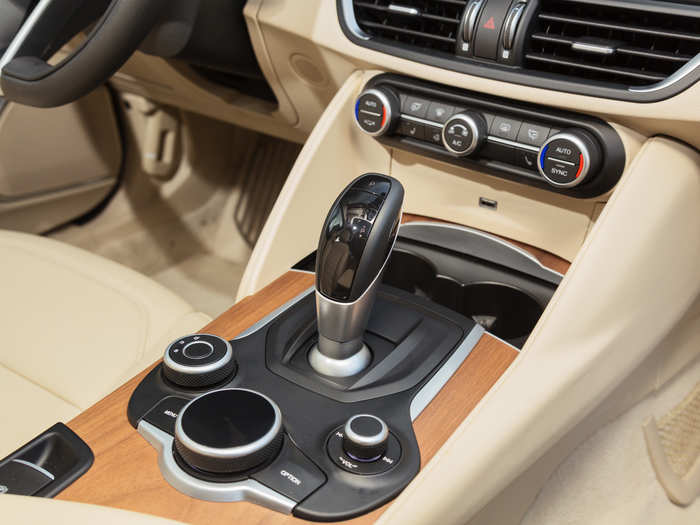
The 8.8-inch infotainment screen is interesting. The slope of the dash gives it an insouciant, angled aspect.
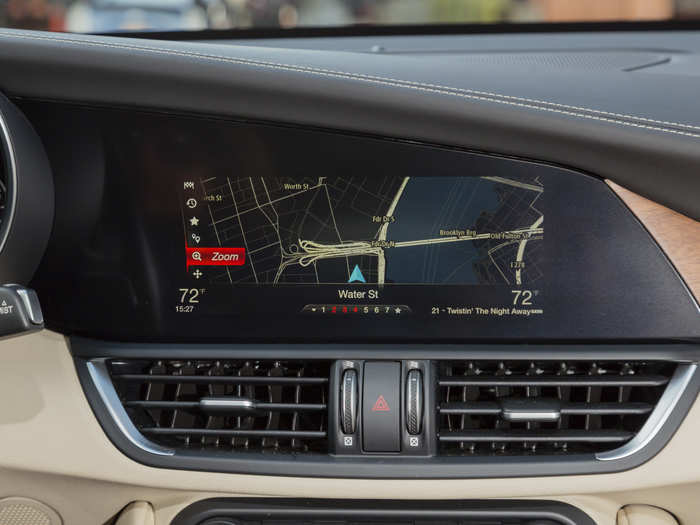
Overall, it's pretty good. Bluetooth device pairing is easy, navigation reliable, and there are USB/AUX ports. Apple CarPlay and Android Auto are also available.
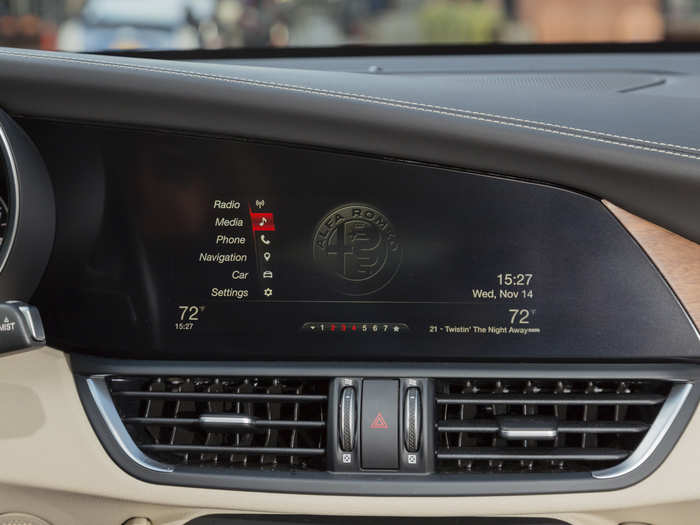
The Giulia comes with a one-year SiriusXM satellite radio subscription. The Harman Kardon audio system is $900 additional — and it sounds extremely good.
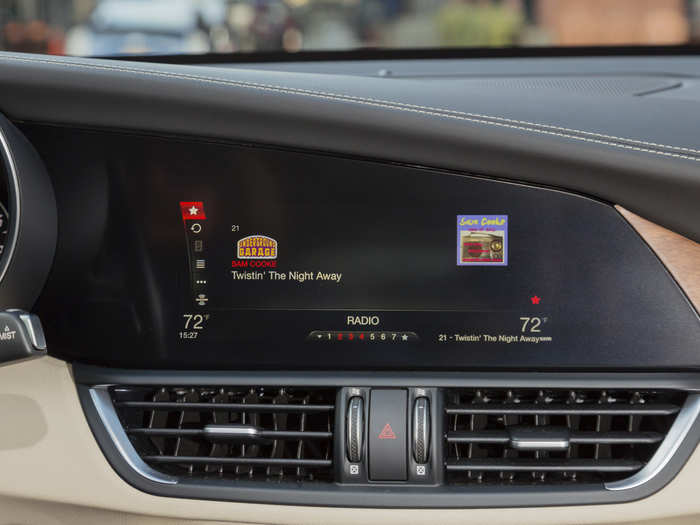
I'd have to say that the Giulia's interior is one of my favorites — and I've driven close to 40 vehicles in 2018.
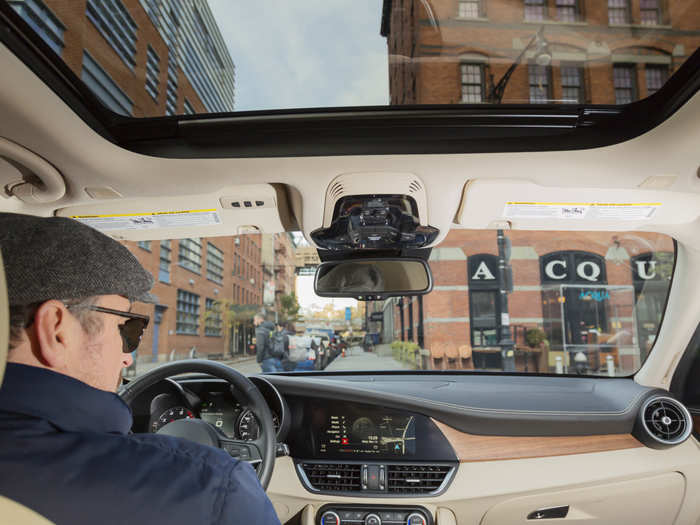
So what's the verdict?
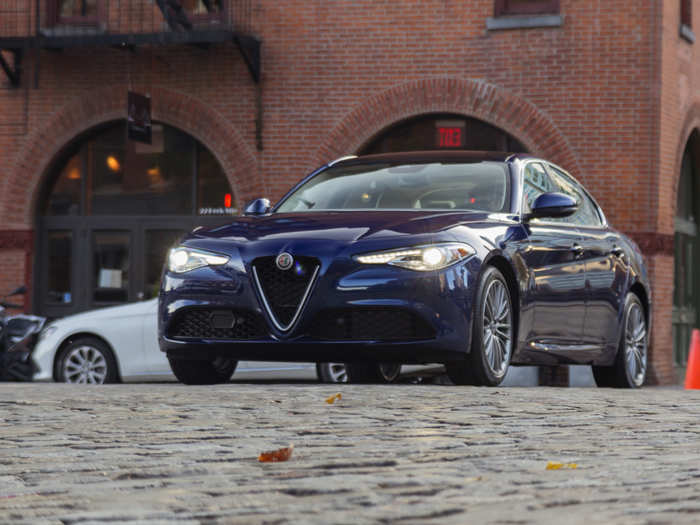
The big differentiator for the Giulia when it comes to the competition from BMW and Audi is that the Alfa is Italian and this not a boring German choice in luxury four-doors. But Alfas are also supposed to be fun to drive. The Giulia Quadrifoglio certainly was. How about the less powerful version?
With, say, a BMW, I typically encounter a rising curve of impressive-ness behind the wheel. The 3-Series is the Giulia's natural foe, and from the base machines all the way up to the mighty M3, you're rewarded with more of simply everything behind the wheel.
The four-cylinder Giulia offers something different. The car feels feathery, light, quick on its feet. And it is quick, with that five-secondish o-60 mph time. The "Dynamic" DNA setting gives you good snap from the throttle and tight inputs from the steering. Find some curves and hurl the Giulia into them. But use the suspension and the crisp traction to sling yourself out, rather than hammering through as you might with the Quadrifoglio.
In "Normal" mode, you can tool around town in quiet, stylish comfort. The "Adaptive" mode makes the best use of the all-wheel-drive system — and I did, in a freak pre-Thanksgiving blizzard on the East Coast! The Giulia was very, very reassuring in some nasty conditions.
Safety and driver-assist features are what you'd expect from a modern luxury sedan, from blind-spot detection to lane-departure and forward-collision warnings (all in all, about $2,000 extra for everything).
The bottom line is that I actively fantasized about owning the Giulia, while I was driving it. It suited my moods. And at $52,000, my well-equipped tester offers a lot for the price, and who knows, you might be able to talk up some deals, given Alfa's new-ness in the US market.
The big caveat is that Alfa hasn't exactly minted a sterling reputation for quality, thus far. However, the Giulia comes with a 4-year/50,000-mile warranty covering car and powertrain, so you can expect the company to fix any immediate problems.
The Alfa Romeo non-Quadrifoglio Giulia is appealing because it offers something appealing that isn't German, while matching and in some ways surpassing Mercedes, BMW, and Audi. It's worth a look.
Popular Right Now
Popular Keywords
Advertisement